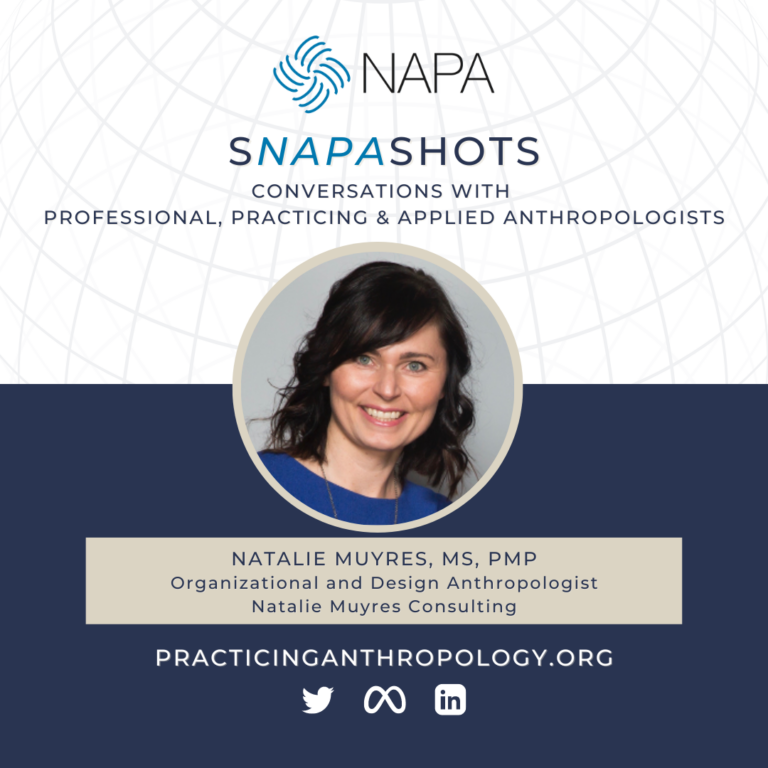Skip the CV. Reinvent the Resume: A discussion of how to present the content of your career

Last year, I reviewed over 150 User Experience (UX) Researcher applications to fill an open position on my team. Of those, less than twenty percent were crafted in a way that made my job as a hiring manager easy. I was looking for scannable materials that eagerly exhibited the value of each candidate. In contrast, the vast majority of applications necessitated digging and scouring for the information I needed.
The phenomenon was ironic – individuals touting their skills as user advocates without understanding the needs, motivations, pain points, and workflows of their user (me). I believe this logic gap is particularly endemic for anthropologists making the shift from academia to applied realms of work, because we haven’t adequately learned what the industry expects in a UX application. Our training is uniquely suited for Design and Researcher roles, but we are largely failing at exposing our value during the application process.
This is a call for anthropologists to evolve our brand. We need to reinvent the traditional resume and consider a supplementary portfolio to tell the stories of our impact. If our discipline fails to mature our self-presentation, we will not achieve our full potential as practitioners.
Ditch the CV
A curriculum vitae (CV) is typically a verbose black-and-white, multi-page Word document with an exhaustive list of a candidate’s history. While publications, grants, scholarships, conference panels, and teaching positions are the currency of the academic world, these are not as critical in the UX industry. Most graduates understand that this content is not appropriate for a UX application. Nevertheless, I am consistently amazed by the number CVs that do make it to my inbox. My eyes instantly glaze over when I see a CV in an application. Put simply, CVs fail within the UX space because they are a terrible user experience for UX hiring managers.
Put less simply, the problem with CVs isn’t necessarily the information itself but its lack of focus. For example, I have seen user-centered design awards and industry-partner side projects buried within these large documents. These line items became the deciding factor on whether or not I screened an applicant. But if these accomplishments had been emphasized and celebrated without me having to unbury them, my enthusiasm for the candidate would have been higher. Further, I’m sure I’ve glanced over my fair share of critical achievements in CVs – a regretful reality for both my applicants and me.
You have done a lot in your career. You are impressive. You know that. Ensure that others realize you have relevant experience by making the highlights of your career obvious. A CV is not the answer to land your next UX position.
Reimagine the Resume
Resumes should be a one-page, readable summary of a candidate’s job experience and education relevant to a desired position. However, based on my experience, a resume can become a challenge to squeeze as many components of a CV into one page as possible. For many applicants, it appears to be the only excuse to use 10-point font and wider-than-default margins. I’ve deemed many illegible and most unpleasant.
Sarcasm aside, a resume’s goal is to persuade a company that this particular candidate is worth talking to in person. This is most effectively done by reviewing any relevant training and emphasizing the impact the applicant has made on a process, product, or service.
I’ve seen many individuals (including myself) coming from a graduate degree in social science who struggle to create their resumes. By industry standards, we don’t have much experience. However, I challenge us to expand the definition of “experience” from just titles and start/end dates to impact. You’ve seen the classic resume example of an MBA student translating x leads into y dollars or a lead growing a team by a factor of three in two years. As a social scientist, you’ve likely had similar impacts. Instead of touting a presentation or a paper on your next resume, translate how your publication promoted change (e.g., your project was a pilot that fed into a larger healthcare study, your findings were presented to clients ahead of a critical policy decision, or your work added to the small collection of studies for a new methodology). This approach makes it much more likely for a future employer to pull out your resume from a pile because you’ve made it clear that you can translate data into action.
Think about the user experience of the hiring manager that will be reviewing your resume. Their goal is to sift through hundreds of applicants in the shortest amount of time to identify the most promising dozen or so candidates. They may be unfamiliar with your specific role, but they have a list of critical attributes they’re searching for and a solid understanding of how a strong candidate presents themselves. From the short list they create, interviews will be scheduled and the core team will take it from there. Your goal, then, is simply to make it through the first cut. This requires more than a long, bulleted list of accomplishments. It requires a curated review of organizational impacts and a touch of intentional design.
Consider a Research Portfolio
There is a paradox that exists for UX Researchers. We do not typically produce designs and we have minimal training in design theory, yet our industry expects an online visual portfolio alongside a resume. I spent multiple years stubbornly refusing to create a research portfolio because I believed researcher applications should not need to include the same artifacts as designer applications. But I’ve changed my mind.
As a hiring manager I know that education, certifications, and past roles are indicators of an applicant’s capabilities. But to be honest, these factors are essentially checkboxes of the minimum requirements to fill the position. I spend a lot more time evaluating how an individual interacts with the team, thinks about fuzzy problems, and presents their ideas. When I see a portfolio attached to a UXR application, I get excited because I know I’m being gifted a better look inside how an applicant thinks.
A well-made research portfolio is frequently an automatic call-back in my book. Why? Because research portfolios are, for all intents and purposes, a collection of short stories. Each story starts with a problem or a crisis (the stakeholder needs and core research questions), the rising action (methodology, recruitment strategy, tooling), complications (the bumps that all research projects run into), a climax (what we learned and what we did about it), and a falling action (here is how we saved the world). Portfolios package all of the bits we want to see about a series of projects in a digestible, often enjoyable format. For the literal readers out there, this usually means a PDF or a PPT document with 5-10 well-designed pages/slides. If a researcher can do this effectively, I know that they aren’t only a good researcher but they are good translator – and both are critical to be a viable candidate.
If you buy my argument that resumes should be succinct, focused, relevant one-page reviews of an applicant’s fit, portfolios become a terrific way to supplement our value proposition. Importantly for recent anthropology graduates, portfolios allow us to bend the rules on what we can brag about. On the surface, we may not seem as competitive as some of our fellow candidates because we’ve been in school for years. A portfolio allows us to dig deeper and showcase our work in a more meaningful way.
Think Wizard of Oz
Remember when Dorothy’s house in the Wizard of Oz lands after the tornado and she opens her door to a technicolored world of awe and amazement? That’s the kind of transformation we need as anthropologists in industry! It’s time to adapt our sad black and white CV into a glorious application of Oz. Here are some aspects to consider.
Evolving your Resume
- Use color. This doesn’t mean use purple font and a gold background. I’m simply suggesting that adding a little color will help your resume stand out from all of the other zebra resumes out there. Consider adding a colored background to your header or to highlight particularly relevant skills.
- Keep the white. Although it is challenging to squeeze everything we want to say about ourselves onto one page, it’s detrimental to sacrifice all of our white space for content. Having a well-balanced design with reasonable margins goes a long way in helping communicate your value.
- Create containers. Instead of using the default resume template that starts at the top and ends at the bottom, use text boxes to create buckets of information. These can be used to draw attention or minimize importance. For example, I’ve seen resumes call out notable clients or impactful projects using a container on the upper-left side of the page (high eye traffic), or add their educational experience on the bottom right (low eye traffic).
- 12 point or bust. I know you want to use 11.5, 11 or dare I say 10.5 font to display more details. However, remember that you are trying to emphasize the most beneficial aspects of your background. You aren’t doing yourself or your potential employer any favors by adding smaller words.
- These are just a few tips. To explore more, check out NAPA’s Career Development page.
Building your Portfolio
- Don’t pay. There are many portfolio websites out there that will give you a domain name, some UI tools to help you design your space, and a bill. You may decide that this is what you need down the line, but why not start with a simple PowerPoint first? My portfolio was made on Google Slides and has done just fine.
- Start small. Start by selecting your 2-3 most impactful projects relevant to your desired position. Some portfolios showcase tens of projects, but the portfolios that have made my go/no go decision easiest have only highlighted 3-5 star projects.
- Don’t design. In my experience, the hardest part about building a portfolio is reviewing the many spectacular portfolio examples on the internet and then trying to create something as impressive. Instead of trying to emulate a look and feel, focus on the content of your story. Start in a black and white word document. Once you get your content, embellishment will follow.
- Again, don’t design. If you don’t find joy in designing out every aspect of your portfolio, keep it simple! Add some (anonymized) photos of your study or the end-product and stop there. Your content (that is focused on story-telling and impact) will speak for itself.
- Stop talking. Much like a resume, portfolios should be short, sweet, and scannable. What’s worse that a 2-page resume? A portfolio that could be a novel. If you can’t fit your case study on a single PowerPoint slide, your story is too long.
- Want some examples? The conclusion of this article highlights 5 stellar research portfolios that will get you started.
Anthropologists are a stellar addition to the UX field because of our robust problem-solving toolkit. However, for anthropologists to thrive in the realm of UX, it is critical that we understand the user experience of our potential employers and shift our application materials to tell a more powerful narrative.
Moreover, mastering the art of self-presentation and storytelling is vital to our discipline as a whole. Academically-trained anthropologists are rarely forced to consider their audience because it has historically been assumed that their audience consists of other academics. However, this expectation is rapidly changing. We increasingly need to reach a wider and broader viewership. Expanding our skillset to showcase how we’ve turned research into action in a concise, persuasive format is essential to our discipline.
Special thanks to Rachel Fleming, Elysa Greenberger, Kyle Jones, and Terry Redding for your helpful comments in the creation of this article.




